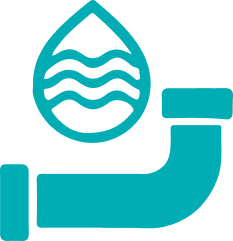Mold Assessment Report
Mold assessments play a crucial role in identifying and mitigating potential health and structural risks associated with mold growth. A comprehensive mold assessment report is not just a formality; it is an essential tool for effective remediation planning, regulatory compliance, and ensuring the safety of the building’s occupants. Here’s what should be included in a mold assessment report and why each component is vital.
"*" indicates required fields
Key Components of a Mold Assessment Report
Executive Summary
What it Includes:
A high-level overview of the findings, conclusions, and recommended actions.
Why It Matters:
Provides a quick, concise snapshot for stakeholders to understand the severity of the issue and necessary next steps.
Inspection Details
What it Includes:
Date, time, and location of the inspection, along with the inspector’s credentials.
Why It Matters:
Establishes credibility and traceability of the report, critical for regulatory and legal documentation.
Site Conditions
What it Includes:
Description of building areas inspected, environmental conditions (temperature, humidity), and any visible signs of mold or water damage.
Why It Matters:
Helps contextualize the findings and identifies conditions conducive to mold growth.
Sampling and Testing Methodology
What it Includes:
Details of sampling techniques (e.g., air, surface), equipment used, and laboratory analysis methods.
Why It Matters: Ensures transparency and reliability of data, which is crucial for accurate diagnosis and remediation planning.
Findings and Analysis
What it Includes:
Identification of mold species, spore concentrations, and affected areas.
Why It Matters:
Provides actionable insights into the type and extent of mold contamination, enabling targeted remediation.
Health and Safety Implications
What it Includes:
Potential health impacts based on mold type and concentration, particularly for vulnerable populations (e.g., children, elderly, immunocompromised individuals).
Why It Matters:
Highlights risks to inform urgent action and protect occupants’ well-being.
Recommendations
What it Includes:
Steps for remediation, moisture control, and prevention of future mold growth.
Why It Matters:
Empowers property owners and managers with clear guidance to address and mitigate mold issues effectively.
Photographic Evidence
What it Includes:
Images of affected areas, sampling locations, and visible mold growth.
Why It Matters:
Provides visual documentation to support findings and communicate the severity of the problem.
Regulatory Compliance
What it Includes:
Confirmation of adherence to local, state, and federal regulations regarding mold assessment and remediation.
Why It Matters:
Ensures legal compliance and reduces liability risks for property owners.
Appendices
What it Includes:
Laboratory test results, diagrams, and additional notes.
Why It Matters:
Offers a comprehensive resource for deeper analysis or future reference.
Reliable Water and Air Quality Testing Services
Protect your environment with our specialized water and air quality testing solutions, offering comprehensive analysis to detect contaminants, convenient sample collection, and on-site testing for immediate results. Contact us today to schedule a consultation or on-site visit and take the first step toward a healthier, safer environment!
Frequently Asked Questions
Why is a mold assessment report important?
A mold assessment report provides critical insights into mold presence and the extent of contamination. It helps property owners take targeted actions to protect occupant health, comply with regulations, and prevent structural damage.
What types of mold are commonly identified in reports?
Reports typically identify molds such as Aspergillus, Penicillium, Stachybotrys (black mold), and Cladosporium. Each type poses different risks and requires specific remediation approaches.
What does “spore concentration” mean, and why is it important?
Spore concentration refers to the number of mold spores in a given air sample. High concentrations indicate significant contamination, which can affect indoor air quality and health.
How are mold samples collected?
Samples can be collected through air testing, surface swabs, tape lifts, or bulk material sampling. Each method is chosen based on the specific conditions of the inspection site.
What if the mold is hidden and not visible during the inspection?
Our assessments include air sampling and moisture detection techniques that identify hidden mold behind walls, under flooring, or in HVAC systems.
How long does it take to receive the assessment report?
Typically, reports are delivered within 3–5 business days after inspection, depending on the complexity of the testing and laboratory analysis.
What should I do if mold is found in my property?
Follow the recommendations in the report, which may include professional remediation, moisture control, and re-inspection to confirm successful remediation.
How can I prevent mold from returning after remediation?
Preventive measures include maintaining proper ventilation, controlling indoor humidity, repairing leaks, and regular inspections.
Are your mold assessment reports compliant with local regulations?
Yes, all our reports adhere to local, state, and federal guidelines, ensuring full regulatory compliance.
Do you offer emergency mold assessments?
Yes, we provide expedited assessments for urgent cases, such as severe contamination or health risks.
Request a Test or Consultation
Your Environment, Our Priority – Fill out the form below, and our team will get back to you as soon as possible.
"*" indicates required fields





